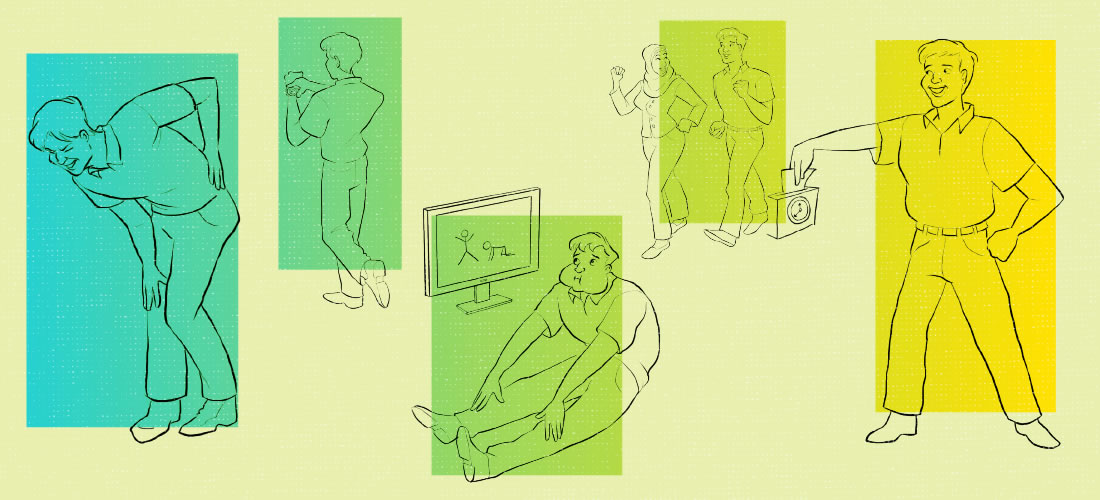Think of this Scenario
You schedule time for your annual doctor’s checkup. After your physical, the doctor indicates that you need to lose weight. Your cholesterol is yada yada, and your triglycerides are yakity yak. He presses on (with some encouragement) that you need to start a new diet and a new exercise blah blah blah. Before Doc can finish his spiel, you’ve already tuned him out. “Thanks Doc, I’m late for a dinner date at The Chophouse.” You leave the doctor’s office with the same sentiment and motivation you had going in, just with that $20 co-pay now in the hands of your physician.
When Does Change Happen?
Adopting a healthier behavior doesn’t happen here. Facts don’t drive behavior change. More often than not, you might leave that office without any motivation or an inherent drive to alter your life or your health habits. Change won’t happen when someone tells you to change.
Change happens when you look back at a photo from your early 30’s and realize how much better you looked then. Change happens when your wife posts a new photo on Instagram and you realize she can’t quite wrap her arms around your entire torso. Change happens when you huff and puff your way up a single flight of stairs. Change happens when you discover it yourself. It is here, where change starts. Even strong encouragement backed with stats, and compelling regressional research won’t really help you embrace change. You must discover it yourself, and make the commitment drawn from your own conclusions.
Changing at Work
We see this often in our work life. An organization wants to roll out a new strategy focused on changing a workforce’s method of operating. The new MO in the strategy can be vetted through months of research and backed by the entire room of executive leaders – many with advanced degrees.
“Hey team, go do this. It’s backed by science, and numbers, and graphs. If we change the way we operate, we’ll execute our strategy.”
You can come up with the most compelling evidence imaginable, and share it with your team, and your team’s teams, and so on, but change is extremely unlikely when a leader launches an email campaign, or newsletter article. History shows that people will tolerate the conclusions of their leaders, but they will ultimately act on their own.
What’s in it For Me?
People need to discover the change for themselves. They need to answer the questions for themselves. How is this relevant to me? Why is this change happening? Why now? How does this change relate to my daily duties, and, will this change really lead us to execute our strategy? When an employee suddenly has the same realization that took place in the boardroom strategy meetings and understands the impact of changing to reach a broader goal…change starts here. How do We Initiate Change?
How do we evoke commitment and engagement of an entire workforce? How do we change? More tactically, how do we get people to discover a change themselves? The answer: disrupt the way employees learn. Don’t just throw something new in their face and convey, “Here’s what you need to do. Now, go do it.” Outline the reasons why. Give them context. Allow them to see that a change is not only inevitable, but necessary, exciting, and relevant to them. Provide a platform for employees to transcend understanding and compliance, help them believe it themselves. Beliefs trump facts.
Presenting your employees with the new initiative, plan, strategy, etc. is great. It may entice a small percentage of your team, but helping them comprehend and buy into the initiative is exponentially better. With an approach like this, employees will engage with a deeper level of commitment, excitement, and seeds for fruition.
Engage People in a Fresh New Way
This methodology is effective across many industries, functions, and focus areas. Anytime an organization identifies and invests energy in a new key initiative, people need to be engaged in a fresh and new way. Workplace health is a key initiative in organizations. Leaders, very clearly, see the value in rolling out a new health and wellness plan throughout their organization. But a rollout of this nature and magnitude is, in fact, a change for your employees. If an hourly employee working in a manufacturing facility two states away from your corporate office gets a notice that his insurance premiums are going to go up unless he brings his blood pressure down…there’s a good chance there will be some resistance. But if you find a way to engage that individual and the rest of his team to see the importance of worksite wellness and the personal benefits to them (i.e. feel better, have more energy, improved sleep health), you create a platform where that individual can see it in themselves that a change like this will not only be good for him, but for his family, and the rest of the organization, then you’ve sparked a movement. You’ve sparked a change.
Nolan McNulty is an Associate Consultant at Root, Inc., a leading consulting firm that uses a combination of art, science and engagement to change the way organizations change. He can be reached at nmcnulty@rootinc.com or 810.836.2934.






